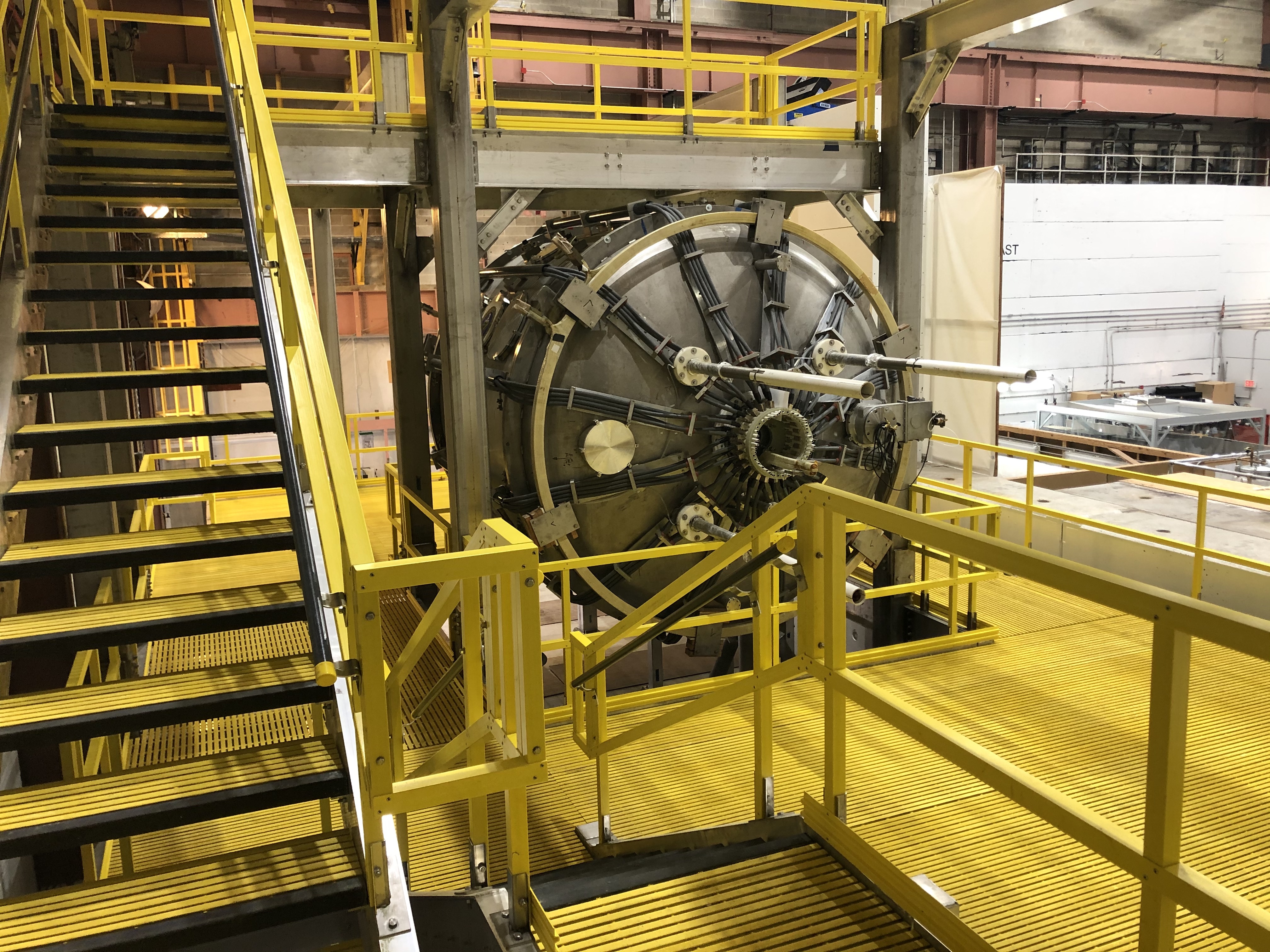


 >
> |
 |
 |
 > > |
| From West | From North | From East | From South |
The Facility for Laboratory Reconnection Experiments (FLARE) is a new intermediate laboratory facility constructed at Princeton University by a consortium of five universities (Princeton University, University of California - Berkeley, University of California - Los Angeles, University of Maryland, University of Wisconsin - Madison) and two Department of Energy (DoE) national laboratories [Princeton Plasma Physics Laboratory (PPPL) and Los Alamos National Laboratory (LANL)]. This facility will be located at the PPPL. The design is based on the smaller device, Magnetic Reconnection Experiment (MRX). The goal of FLARE is to provide experimental accesses to new regimes of the magnetic reconnection process and related phenomena directly relevant to heliophysics, astrophysics, and fusion plasmas. Click here to learn more about magnetic reconnection.
The
FLARE device construction is funded by the NSF
Major
Research Instrumentation (MRI) Program, with cost share
contributions from Princeton
University, University
of Maryland, and University
of Wisconsin - Madison. The construction has been
finished in December 2017. The facility support is provided by Princeton
University.
 |
|
|
The FLARE Device Design (3m diameter and 3.6m length) |
The
Constructed FLARE Device and Power Supplies as of December 2017 |
   





|
Last
Revised 12/6/20 |